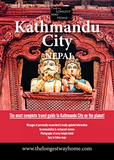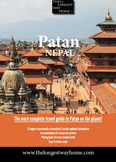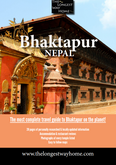On April 25th 2015 a 7.8 magnitude earthquake devastated Nepal. Many of the Kathmandu Valley's historic monuments, buildings and temples were either completely destroyed or damaged. This page contains a list of temples that were either destroyed or damaged.
I will be updating it regularly. It's very early to produce a complete inventory due to the huge humanitarian relief effort that's currently ongoing along with the physical destruction around the valley. Hopefully in the next few weeks the list will be completed. Feel free to contact me if you have any data.
Temples & buildings destroyed in Kathmandu City
Many of the temples destroyed or badly damaged in Kathmandu city were located in Kathmandu Durbar Square. It is also called Basantapur durbar square. Durbar Square litrally means a "Place of Palaces." Kathmandu durbar square was originally formed from the palaces and courtyards of the old Malla and Shah kings dating back to the 15th century.
Outside of Kathmandu Durbar Square many temples and buildings survived with only minor damage or cracks. These include Boudhanath and Swayambunath. Let's take a look at Kathmandu Durbar Square's damage first.
Temples & buildings destroyed in Kathmandu Durbar Square
Kathmandu Durbar Square suffered greatly in the earthquake. There are however several iconic temples and buildings that have survived. These include Kumari House, Taleju temple and Jannath temple.
Kasthamandap

Completely Destroyed. The very building that gave Kathmandu its name has been destroyed. It will have to be completely rebuilt. There was a plaque inside Kasthamandap that dates to 1048 which was enough to make it one of the oldest buildings in Nepal.
Maju Dega & Narayan Vishnu Temples

Completely Destroyed. In the foreground is the mighty Maju Dega temple that once dominated Durbar square, it was obliterated. In the background is the three-roofed Narayan Vishnu temple which was nearing reconstruction. It too was completely destroyed.
Trailokya Mohan

Krishna (Chasin Dega)
Old Drums
Kakeshwar Temple

King Malla's Column
Shiva Prabati Temple

Gaddi Baihak
Basantapur Tower
Dharahara (Bhimsen Tower)


Temples/buildings that survived the earthquake in Kathmandu Durbar Square
Kumari House, Bimaheshwor Temple, Kabindradpur Sattal, House of the Priest, Kal Bhairab, Kabindra, Mahhendreshwar Temple, Taleju Temple, Vishnu & Indraha Temples and Jagannath Temple are all still standing safe. The inner palace is currently closed but it is believed to be intact.
A complete list of all temples in Kathmandu city including map locations is available in my guidebook to Kathmandu city
Temples & buildings destroyed in Patan City
Patan's temples suffered a lot of damage. Most of it occurred in Patan Durbar Square. Cracks and breaks are showing on many buildings around the square.
To the north there is good news as the Golden Temple remains intact. Likewise the Kumbeshwar Temple Complex has survived though the main temple is leaning slightly.
To the south the Machchhendranath temple remains relatively unscathed. Kumari house to the west is also safe.
Hari Shankar

Completely Destroyed. One of the most outstanding temples in Patan. Built in 1706 it is dedicated to Shankar Narayan deity who is half Shiva and half Vishnu.
Mahaboudha temple

Kumbeshwar Temple Complex

Damaged (repairable). Legend has it that this complex is where Patan or rather “Lalitpur” got its name from. This complex contains several buildings and temples. Many of these buildings survived with minor damage. However the main Kumbeshwar temple tower now stands at an angle and needs repairs before it topples over.
Keshab Narayan Chowk

Vishwanath Temple

Damaged (repairable). Dedicated to Vishwanath, a manifestation of Shiva. It was built between 1676-78. There are cracks in the outer stucco and the inner brickwork.
Bhimsen Mandir

Jagan Narayan

Completely Destroyed. The oldest building in the square which had two stone lions guarding it at the front. Dedicated to Vishnu/Narayan it was built in 1566.
Chyasin Dewal

Sundari Chowk

Damaged (repairable). There’s a courtyard that still contains fabulous woodwork and a sacred stone. There’s a royal bath complete with basin and a gilded spout.
The rear of this Chowk has been destroyed but the rest remains intact.
Degutalle & Taleju Temples


Temples/buildings that survived the earthquake in Patan
The Golden Temple, North Stupa, Kumari House, Krishna Mandir, Shikarra Temple, Chyasin Dewal, Bishwakaram Temple, I Baha Bahi Monastery, Machchhendranath Temple and Uku Bahal all survived.
The majority of Patans temples have survived though nearly all in Durbar Square took some damage. A complete list of all the temples in Patan including map locations is available in my guidebook to Patan city
Temples & buildings destroyed in Bhaktapur
Bhaktapur's suburbs took more damage than any of its three main squares. The iconic Nyatapola temple and most of Taumadhi square remains standing. Dattatreya Temple in Dattatreya Square is also relatively unscathed.
However, Bhaktapur Durbar Square did lose some icon temples and buildings
Vatsala Durga Temple

Completely Destroyed. built in 1672 by King Jagat Prakash Malla this beautiful stone building was a favorite for many people to sit out on and watch the sunset in Bhaktapur durbar square. It is no more than rubble now.
Fasidega temple

National Art Museum

Mild Damage (repairable). Once known as Malati Chowk the western end of the royal palace now houses the National Art Gallery. Inside there was some damage to items. However the exterior has only minor damage.
Taleju temple

Rameshwar Temple

Mild Damage (repairable). A Red-bricked temple in Gum Baja style dedicated to Shiva. It is an open shrine surrounded by four pillars in Bhaktapur Durbar Square.
Til Mahdav Narayan Temple


Temples and buildings that survived the earthquake in Bhaktapur
The majority of Bhaktapur's temples have survived. A complete list of pre-earthquake temples including map locations is available in my guidebook to Bhaktapur

Other Temples and buildings that survived the earthquake in the Kathmandu Valley
The majority of the Kathmandu Valley's temples have survived. Though the majority have sustained some form of minor damage. As a tourist one would not notice most of this damage
Swayambunath (Monkey) temple survived with only a few cracks though Anantapur (one of the large white chedis) was destroyed it is quite repairable.
In Boudhanath damage is minimal. The Boudha Stupa itself has only one large crack at its base which is very repairable and some metal work got damaged.
In Pashupatinath damage was again minimal. Jayabageshwari temple has some damage. However Pashupatinath and the ghats are undamaged.
You can read more about the temples of Kathmandu Valley in my exclusive guidebook to the Kathmandu Valley.
Restoration of the Kathmandu Valley Temples
Soon after the 2015 earthquake the Nepalese Prime Minister announced that all the ruined temples would be restored. That's a noble but ambitious statement. The truth of the matter is many of Nepal's historic buildings have needed restoration for many years, let alone structural reinforcement. The responsibility lies with the Department of Archeology. The problem has always been a lack of funding.
Though tourists saw a near year on year increase in entry fees few saw any improvements. Allegations of corruption and slow moving red tape have always gone hand in hand.
Over the past few decades many temples have been restored using private donations and funds. Examples include Swayambunath and Chyasalin Mandap.
Here you can read more about Nepal's Department of Archeology's plans.
This page is an ongoing project. If you'd like to help please contact me with details of destroyed temples or buildings. With thanks to Amir Bagale & Ajaya Manandhar for updates.







